Features
Sandalwood relic displayed at Siri Vajiraramaya, Bambalapitiya
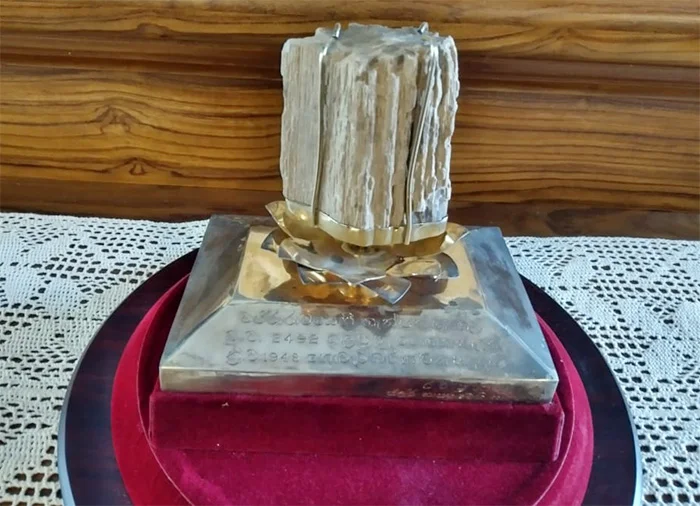
By Siri Vajirārāmaye Ñānasīha
The centrepiece of the exhibits on the ground floor of the newly opened three-storeyed building of the Siri Vajirarama Library is a sandalwood fragment 2 ½ inches long and 6 ½ inches in girth. If I say that the piece of sandalwood is over 2500 years old, it may surprise some. A few may even shrug their shoulders with the words ‘May it be so,’ in the same manner Upaka shrugged his shoulders when meeting the Buddha on his way to Isipatana, and when the Buddha said that he was now an Enlightened One.
The question that will arise in anyone’s mind would be: “How come that a piece of Sandalwood be kept in the one hundred years old Siri Vajirarama Library, which was the much-cherished treasure trove of the Most Venerable Pelene Sri Vajiragaña Mahanayaka Thera?” It is because of the sacredness shrouding the piece of sandalwood as it came from the funeral pyre of the late Arahant Sariputta, the chief disciple of the Buddha on his right. He predeceased the Buddha. This article is to restate the authenticity and historicity of that sandalwood fragment.
According to literary records, the passing away of Venerable Sariputta occurred in Rajagaha. It is recorded that Venerable Cunda, the youngest of the brothers of Venerable Sariputta was attending on him. After the cremation of Venerable Sariputta in Rajagaha, he brought the collected skeletal remain in a bowl and handed them to Venerable Ananda who was residing with the Buddha and other monks at Jetavanaramaya. The ashes were taken back to Rajagaha and enshrined in a stupa. Although that was the written tradition, the excavations made in the archaeological sites in Rajagaha, even to date, have not yielded any results in respect of the remains of Arahant Sariputta and Arahant Maha Moggalana.
On the other hand, when British archaeologists Alexander Cunningham (later ‘Sir’ after being knighted) and Frederick Charles Maisey were excavating the stupas at Sanchi they found a box that contained the relics of Venerable Sariputta and Venerable Mahaā Moggalana. The two were very close friends even in lay life and after getting disenchanted with life went in search of a teaching that would give them solace. It is not my intention to narrate the episodes relating to the meeting of Sariputta, the Brahmin, with Venerable Assaji, and the happenings thereafter. Sariputta was the first to get inspired and after his conveying the happy news to Moggalana, they both went to meet the Buddha. Seeing them coming from afar, the Buddha announced that the approaching pair would be his two chief disciples. It is significant that even after their becoming the disciples of the Buddha, they were not separated and Venerable Sariputta sat to the right of the Buddha and became Chief Disciple to the Right and Venerable Moggalana, who is referred to as Maha Moggalana to distinguish him from other Moggalanas in the Buddha’s dispensation, sat to the left of the Buddha and hence was named the Chief Disciple to the Left.
Sir Alexander Cunningham has this to say regarding these discoveries in his book The Bhilsa Topes or Buddhist Monuments of Central India (Smith, Elder and Co., 65 Cornhill, London, 1854). Two sets of relics of Venerable Sariputta and Venerable Mahaā Moggalana, were found in Sanchi Stupa No. 3 and another Stupa at Satdhara, close by.
“5. A shaft was sunk in the centre of this Tope (stupa), and after a few hours of labour we came to a large slab upwards of 5 feet in length, lying in a direction from north to south. On raising this slab, we saw two large stone boxes each bearing a short inscription on its lid. That to the south bore sariputasa, ‘relics of Sariputta’; that to the north bore Mahaā Mogalinasa, ‘relics of Mahaā Moggalana’. Each box was a cube of 1 ½ foot, with a lid 6 inches thick. The position of the relics was on the same level as the terrace outside.
“6. In Sariputra’s box we found a large steatite casket, upwards of 6 inches broad and 3 inches in height, covered by a very thin saucer of black earthenware 9 ½ inches in diameter with a depth of 2 inches. The saucer was broken and the upper surface had peeled off, but the colour of the inside was still lustrous. Close to the steatite casket were two pieces of sandalwood, one 4 ½ inches in length and the other 2 ½ inches. (Emphasis mine.) The only other thing in this box was a live spider. ….
“11. In the northern box we found another steatite casket, somewhat smaller than that of Sariputra. It is apparently of a softer substance; for the surface when first seen was white and powdery like chalk; but this has now nearly disappeared, and the colour is almost the same as that of Sariputra’s casket. Inside we found two minute fragments of bone, of which the larger was rather less than half an inch in length.
“12. On the inner surface of the lid of each casket is a single ink letter, half an inch in height. In Sariputra’s casket the letter is śa and in Mahaā Moggalana’s it is ma; these being the initial letters of their respective names.
“13. The relative position of these relics has its significance: for in their religious ceremonies Indians always sat facing the east, which therefore they name the front, para; while the south and north were respectively the ‘right,’ dakshina, and the ‘left,’ vama. The west was called apara ‘behind.’ Now Sāriputra and Mahā Moggalana were the principal followers of the Buddha, and were usually styled his right-hand and left-hand disciples. Their ashes thus preserved after death, the same position to the right and the left of the Buddha, which they had themselves occupied in life. (Emphasis mine) ….
“18. As the funeral pile was formed of chandana, or sandal, it seems highly probable that the two pieces of this fragrant wood, which we found along with SARIPUTRA’S relics, must have been taken from this pile. We know that a Tope was built over the charcoal with which Buddha’s body was burned, and that the Mauryas of Pippalawano celebrated a festival in honour of their multi-prized acquisition. From this account there would be nothing improbable in supposing that fragments of sandalwood from the funeral pyre of Sāriputra should have been held in almost equal estimation.”
The piece of Sandalwood in the possession of Siri Vajiraramaya is 2 ½ inches in length. The two Sandalwood fragments found near the casket, as quoted above from Sir Alexander Cunningham’s first-hand account of the discovery of the relics of Arahants Sariputta and Mahaā Moggallana, were 4 ½ and 2 ½ inches long. Hence, any evidence to prove that the piece of Sandalwood at Siri Vajiraramaya is the same that was found by Sir Cunningham will confirm beyond any doubt the authenticity and the historicity of this priceless possession.
The translation of a report published in the Sinhala Bauddhaya paper of November 20, 1948, of an important event that took place at the Siri Vajirarama temple is given below.
“A Sandalwood fragment obtained from a stupa that enshrined the relics of Arahant Sariputta and Arahant Moggallana, the two chief disciples of the Buddha, was gifted ceremonially to Vajiraramaya temple at Bambalapitiya by G.K.W. Perera. This valuable relic has been obtained by Perera from a descendant of General F.C. Maisey when he was serving as Trade Commissioner in England.”
The authenticity is further collaborated by the following inscription seen at the base of the receptacle displaying this valuable relic.
“Attorney-at-Law G.K.W. Perera, who obtained from the inheritors (of General F.C. Maisey) this sandalwood fragment found with the relics of Arahant Sariputta at the Sanchi stupa was deposited at Vajiraramaya on B.E. 2492 on the full-moon day of Il; C.E. 1948 Monday November 15.”
I add a personal recollection here. I well remember as a 12-year-old standing with my parents and sisters in a long queue winding its way from Alexandra Place around Vihara Maha Devi Park ending at the entrance to the Museum. We were to venerate the sacred relics of Arahant Sariputta and Arahant Maha Moggallana, on display within the Museum premises.
Features
Hidden influence of self-imposed rules on human behaviour

Breaking boundaries:
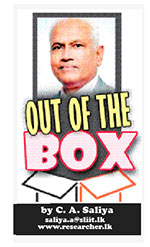 Self-imposed rules subtly govern many aspects of human behaviour, often without conscious awareness of their influence. These unwritten constraints, shaped by cultural traditions, social norms, and personal biases, offer a sense of order but can simultaneously hinder flexibility, creativity, and rational decision-making. While some rules serve vital functions, such as ensuring safety or hygiene, many persist due to fear, misinformation, or a lack of empirical evidence. By understanding the psychological and cultural origins of these limitations, individuals can make more informed choices, alleviating unnecessary anxieties and enhancing personal freedom. Rigid adherence to these rules—driven by cognitive rigidity, perfectionism, or cultural conditioning—can increase stress and obstruct adaptability. Embracing flexibility and questioning these constraints invites new experiences and growth, fostering a more empowering mindset. Instead of focusing on the question “Can this be done?” individuals should ask, “Why not?” Achieving a balance between tradition and rationality allows behaviours to serve personal well-being, resilience, and progress in society.
Self-imposed rules subtly govern many aspects of human behaviour, often without conscious awareness of their influence. These unwritten constraints, shaped by cultural traditions, social norms, and personal biases, offer a sense of order but can simultaneously hinder flexibility, creativity, and rational decision-making. While some rules serve vital functions, such as ensuring safety or hygiene, many persist due to fear, misinformation, or a lack of empirical evidence. By understanding the psychological and cultural origins of these limitations, individuals can make more informed choices, alleviating unnecessary anxieties and enhancing personal freedom. Rigid adherence to these rules—driven by cognitive rigidity, perfectionism, or cultural conditioning—can increase stress and obstruct adaptability. Embracing flexibility and questioning these constraints invites new experiences and growth, fostering a more empowering mindset. Instead of focusing on the question “Can this be done?” individuals should ask, “Why not?” Achieving a balance between tradition and rationality allows behaviours to serve personal well-being, resilience, and progress in society.
Cultural Differences in Dining Etiquette: A Reflection on Personal Experiences
During my visit to Chengdu, a beautiful city in China, last November, I was accompanied by a friend who was well-versed in the local customs. One afternoon, while having lunch with a group of friends, I instinctively attempted to manage some food with my fingers. To my surprise, my Chinese friends reacted with visible discomfort and disapproval. They were adept at using chopsticks, skillfully handling complex food items such as grilled meat and bony fish. However, I struggled with chopsticks, lacking the dexterity to manage intricate dishes effectively. The reaction of my Chinese companions underscored the strong cultural emphasis on proper utensil use in China. In Chinese culture, using chopsticks is not only a matter of practicality but also a sign of etiquette and respect. Eating with fingers, unless explicitly part of a particular regional cuisine, is generally perceived as unhygienic or inappropriate in formal settings.
A similar experience occurred in Sri Lanka while I was working for a bank. At a formal dinner, in a well-known restaurant in Colombo, a few colleagues and I opted to eat with our fingers, a common practice in Sri Lankan culture, particularly for rice-based dishes. However, the General Manager expressed his disapproval, making disparaging remarks and insisting that we use a fork and spoon instead. This reaction reflected the influence of Western dining etiquette in professional and formal settings in Sri Lanka. British colonial rule significantly impacted Sri Lankan dining customs, leading to the adoption of Western-style utensils in formal and corporate environments. Despite the cultural acceptability of eating with fingers in many local households, there is an increasing preference for Western table manners in urban and elite circles.
These experiences highlight the intersection of cultural expectations and globalization. In many Asian cultures, including India, Sri Lanka, and parts of the Middle East, eating with hands is a long-standing tradition associated with sensory engagement and respect for food. Conversely, in East Asian countries, such as China, Japan, and Korea, chopsticks are the primary utensils, and using hands is generally frowned upon. Western dining etiquette, emphasizing cutlery, such as forks, knives, and spoons, has gained prominence globally, often being regarded as a standard for formal dining.
Breaking Self-Imposed Rules: Challenging Cultural and Social Norms
Humans often create and adhere to self-imposed rules that shape their behaviours, beliefs, and everyday practices. These rules, though not legally or universally mandated, become ingrained in certain communities or cultures to the point that breaking them appears unnatural or even unacceptable. Many of these unwritten rules stem from cultural traditions, social norms, or personal biases rather than rational thought. While these informal restrictions offer structure and continuity, they can also limit flexibility, innovation, and personal freedom.
Cultural and Social Norms in Food Choices
One area where self-imposed rules are evident is in food consumption. Cultural norms strongly influence what people eat, how they prepare their food, and what combinations are deemed acceptable. The example of eating kiribath (milk rice) with katta sambol (a kind of chili paste) and fried eggs illustrates this concept. The surprised reaction from a colleague—”Can you eat kiribath with eggs?”—suggests an implicit rule about what ingredients pair well together. However, food combinations are subjective and often vary by personal taste and cultural background.
Another example is the reaction to drinking coffee mixed with a popular chocolate-malt powder due to the unavailability of regular milk powder. A friend’s response, “Bonna puluvanda?” (Can you drink it?). This reveals an assumption that certain beverage combinations are unacceptable. However, blending coffee with other drinks is common in different cultures—consider mocha, which combines coffee and chocolate, or Thai iced coffee, which includes sweetened condensed milk. These examples demonstrate that many food-related self-imposed rules are based on familiarity rather than objective reasoning.
Rationality and Irrationality in Everyday Fears and Perceptions
Human perceptions of safety, hygiene, and risk often stem from personal experiences, cultural influences, and cognitive biases. While some concerns have a rational basis, others may be exaggerated due to fear, misinformation, or lack of direct experience.
Perceived Risks of Three-Wheelers: Rational or Irrational?
 Three-wheelers, commonly used in regions like South Asia, Africa, and parts of Latin America, are often perceived as risky due to factors such as driver anonymity, lack of physical protection, and exposure to external elements like dust and germs. However, countries like India and Sri Lanka have implemented regulations, including registered driver identification and GPS tracking, to enhance passenger security. While three-wheelers offer less structural protection in accidents compared to cars, their safety largely depends on road conditions, driver behaviour, and adherence to traffic laws. In well-regulated environments, with modern security measures, the risks associated with three-wheelers are significantly minimal. making them a relatively safe transport option.
Three-wheelers, commonly used in regions like South Asia, Africa, and parts of Latin America, are often perceived as risky due to factors such as driver anonymity, lack of physical protection, and exposure to external elements like dust and germs. However, countries like India and Sri Lanka have implemented regulations, including registered driver identification and GPS tracking, to enhance passenger security. While three-wheelers offer less structural protection in accidents compared to cars, their safety largely depends on road conditions, driver behaviour, and adherence to traffic laws. In well-regulated environments, with modern security measures, the risks associated with three-wheelers are significantly minimal. making them a relatively safe transport option.
Exposure to Germs and External Elements
Some individuals avoid three-wheelers due to concerns that wind exposure may carry germs or pollutants. While air pollution is a legitimate health issue, particularly in urban areas, it is not exclusive to three-wheelers. Walking, cycling, or even using open windows in a car can lead to similar exposure. Generally, outdoor exposure to pollutants is often less harmful than indoor air pollution in poorly ventilated vehicles. This suggests that while external exposure exists, it may not be as harmful as perceived.
Food-Related Phobias and Hygiene Concerns
Similarly, some people refuse to eat certain foods due to fear of contamination or improper hygiene practices. This phenomenon can be categorized as food neophobia (fear of new foods) or contamination phobia, both of which are influenced by psychological and cultural factors.
Fear of Contamination and Hygiene Standards
Concerns about food hygiene are rational when considering the risks of foodborne illnesses, which can result from improper handling, washing, or cooking. The World Health Organization emphasizes that food safety practices, such as washing vegetables and proper storage, are essential to prevent bacterial infections. However, excessive fear, especially when there is no evidence of contamination, may indicate an irrational phobia rather than a legitimate health concern.
The Impact of Rigid Beliefs on Daily Life and Psychological Well-being
Human behaviour is shaped by a complex interplay of cultural, psychological, and personal factors. Some individuals adhere strictly to self-imposed rules, often making their lives unnecessarily difficult. Consider a scenario where a son refuses to sit on a chair recently occupied by his mother or insists on washing rice multiple times in pursuit of perfectly clear water. These actions, while seemingly trivial, reflect a deeper psychological and cultural conditioning that influences behaviour and decision-making.
Sociocultural Influences on Behavioural Rigidity
Cultural traditions and upbringing play a crucial role in shaping rigid behaviours. For instance, in some Asian societies, the concept of ritual purity dictates that certain objects or spaces become temporarily “unclean” after being used by someone else.
The Consequences of Inflexibility
People who set rigid rules for themselves often face unnecessary stress and limitations. Research has shown that cognitive inflexibility is associated with higher levels of anxiety, stress, and dissatisfaction with life. By adhering to self-imposed rules that lack a logical basis, individuals reduce their ability to adapt to new situations and experience life more freely.
The Importance of Flexibility and Adaptability
Developing psychological flexibility allows individuals to adjust their behaviour according to different contexts, making life more manageable and enjoyable. Psychological flexibility has been linked to better mental health, improved problem-solving skills, and greater resilience. Learning to let go of unnecessary rules and adapting to situations can lead to a more fulfilling life.
(The writer, a senior Chartered Accountant and professional banker, is Professor at SLIIT University, Malabe. He is also the author of the “Doing Social Research and Publishing Results”, a Springer publication (Singapore), and “Samaja Gaveshakaya (in Sinhala). The views and opinions expressed in this article are solely those of the author.
Features
Clean Sri Lanka and Noise Pollution (Part I)

by (Dr) Jayampathy Wickramaratne,
President’s Counsel
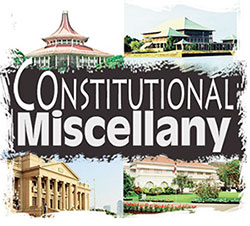 One area of focus of the ‘Clean Sri Lanka’ programme, initiated by the new government, that has enthused the people at large is the drive to clean the environment. People affected by intense noise hope that cleaning the environment will not be limited to keeping public spaces clean but will also address the issue of noise pollution. This is evident from letters to newspapers and social media posts calling upon the authorities to deal with noise pollution from varied sources, such as entertainment, places of religious worship, vehicular traffic, construction and industrial activities as part of ‘Clean Sri Lanka’.
One area of focus of the ‘Clean Sri Lanka’ programme, initiated by the new government, that has enthused the people at large is the drive to clean the environment. People affected by intense noise hope that cleaning the environment will not be limited to keeping public spaces clean but will also address the issue of noise pollution. This is evident from letters to newspapers and social media posts calling upon the authorities to deal with noise pollution from varied sources, such as entertainment, places of religious worship, vehicular traffic, construction and industrial activities as part of ‘Clean Sri Lanka’.
I write this piece not only as one having an interest in fundamental rights but also as a victim of noise pollution. In the locality where I live, off Rajagiriya, residents have for years been subjected to intense noise forced upon them, mainly by music but also by fireworks, emanating from events conducted on the premises of a government-owned institution. Complaints to the institution, as well as to the Police, bore no results. I refrain from naming the institution as the matter is under investigation by the Human Rights Commission, and the new management of the institution has promised us that remedial measures will be taken.
While the ‘Clean Sri Lanka’ programme was in full swing, a group of tourists, participating in a musical event in the Weligama area, had objected vociferously to the Police prohibiting the use of loudspeakers after 10 p.m. when the period for which a permit had been issued ran out. One female tourist is heard, in a video of the incident, saying that not allowing the use of loudspeakers will adversely affect tourism.
Reacting to the incident, two government spokespersons said that the present government cannot be blamed as the Police were only giving effect to a judgment of the Supreme Court. Not stopping at that, they said that steps would be taken to have the judgment revised. It might interest readers to know that the then Deputy Minister of Tourism, Diana Gamage, made a similar statement in October 2022.
Supreme Court on noise pollution, Ashik v. Bandula
The judgment referred to is Ashik v. Bandula and others, reported in [2007] 1 Sri Lanka Law Reports on page 191, which was widely welcomed. The case commenced as a fundamental rights application by the trustees of a mosque in Weligama against the Police for refusing a loudspeaker permit. The Police contended that residents in the area had complained of noise pollution due to the excessive use of the loudspeakers by three mosques. The Supreme Court noted that the application raised fundamental issues with regard to sound pollution and standards that the Central Environmental Authority (CEA) should enforce. The CEA was accordingly added as a party. Environmental Foundation Limited was permitted to intervene. The court proceeded with the case as being of public interest.
Noting that our country has probably the oldest jurisprudential tradition of a secular approach in dealing with a public nuisance, the Court referred to the 1895 case of Marshall v. Gunaratne Unnanse where the Supreme Court upheld that conviction of the principal trustee of a Buddhist Vihara in Colombo who was charged under the then applicable section 90 of the Police Ordinance for creating noise in the night and disturbing the neighbourhood.
The Supreme Court referred to Re Noise Pollution, a celebrated case decided by the Indian Supreme Court, noting that the latter Court had firmly rejected the contention that there is a fundamental right to make noise associated with the freedom of speech and expression. The Chief Justice of India delved into the etymology of the term “Noise” and noted that it is derived from the Latin word “Nausea”, defined as unwanted sound, a potential hazard to health and communication dumped into the environment without regard to the adverse effect it may have on unwilling ears.
Chief Justice Lahoti continued: “Noise is more than just a nuisance. It constitutes a real and present danger to people’s health. Day and night, at home, at work, and at play, noise can produce serious physical and psClean Sri Lanka and Noise Pollution (Part I)ychological stress. No one is immune to this
stress. Though we seem to adjust to noise by ignoring it, the ear, in fact, never closes and the body still responds —sometimes with extreme tension, as to a strange sound in the night. … Noise is a type of atmospheric pollution. It is a shadowy public enemy whose growing menace has increased in the modern age of industrialisation and technological advancement. … Nobody can claim the fundamental right to create noise by amplifying the sound of his speech with the help of loudspeakers. While one has a right to speech, and others have a right to listen or decline to listen. Nobody can be compelled to listen and nobody can claim that he has a right to make his voice trespass into the ears or mind of others. Nobody can indulge in aural aggression.”
The Sri Lankan Supreme Court held that there was no dispute that people have been denied equal protection of the law by the failure of the executive to establish by way of regulations an effective legal regime as mandated by the National Environmental Act to safeguard the public from the harmful effects of noise pollution. The facts also reveal that there are no guidelines for the effective implementation of the applicable provisions of law so as to provide to the people equal protection of the law guaranteed by Article 12(1) of the Constitution. Accordingly, the Court considered it to be just and equitable in the circumstances of the case to make the following directions:
(i) That the emission of noise by the use of amplifiers, loudspeakers or other equipment or appliances which causes annoyance to the public or to the people in general who dwell or occupy property in the vicinity be considered a public nuisance in terms of section 261 of the Penal Code and that the Police should entertain complaints and take appropriate action for the abatement of such public nuisance;
(ii) That all permits issued by the Police under section 80(1) of the Police Ordinance shall cease to be effective forthwith;
(iii) That no permits shall be issued in terms of section 80(1) of the Police Ordinance for the use of loudspeakers and other instruments for the amplification of noise as specified in that section covering the period 10 p.m. (night) to 6 a.m. (morning). Such permits may be issued for special religious functions and other special events only after ascertaining the views of persons who occupy land premises in the vicinity, a record of such matters to be maintained and the grant of any such permit shall be forthwith reported to the nearest Magistrate Court;
(iv) That in respect of the hours from 6.00 a.m. to 10.00 p.m., permits may be issued for limited periods of time for specific purposes subject to the strict condition that the noise emitted from such amplifier or loudspeaker or equipment does not extend beyond the precincts of the particular premises.
(v) Where a permit is issued in terms of section 80(1) as provided in direction (iii) and (iv) sufficient number of Police Officers should be designated and posted to the particular place of use to ensure that the conditions imposed are strictly complied with;
(vi) That the Police will make special arrangements to entertain any complaint of a member of the public against any person guilty of an offence of public nuisance as provided in section 261 of the Penal Code or of using any loudspeaker, amplifier or other instrument as provided in section 80 of the Police Ordinance contrary to any of these directions and take immediate steps to investigate the matter and warn such person against a continuance of such conduct. If the conduct is continued after that warning to seize and detain the equipment as provided in section 80(4) of the Police Ordinance and to report the matter to the Registrar of this Court.
The Inspector General of Police was directed to submit a report to the Court as to the action taken on the judgment. IGP’s Circular No. 2031/2007 and Crime Circular 17/2007 were issued in conformity with the judgment. A few years later, following representations made mainly by artistes to President Mahinda Rajapakse, the State requested the Supreme Court to extend the time period of permits during weekends. This request was granted.
Accordingly, the Supreme Court directed that musical and cultural shows should be brought to an end at 1.00 a.m. on Fridays and Saturdays and 12.30 a.m. on Sundays. What is important to note is that no change was made to the strict condition made by the Court that noise emitted from an amplifier, loudspeaker or equipment should not extend beyond the precincts of the particular premises.
Southern hoteliers protest relaxing noise laws
The government’s response to a small group of tourists wanting to make merry, unmindful of the rights of the residents of the area, was clearly a knee-jerk reaction. Its spokespersons went to the extent of adding that not permitting loudspeakers till late would adversely affect the tourist industry.
These responses triggered an immediate backlash from citizens concerned with the environment, especially those affected by noise pollution. The Facebook group National Coalition Against Noise Pollution (Shabda Dooshanayata Erehi Jathika Ekamuthuva — type in Sinhala fonts to visit the page) is at the forefront.
The authorities may not have expected opposition from the tourist industry itself. At a media briefing in Galle on 27 January, the Southern Province Tourist Hoteliers Association said that tourists vehemently oppose intense noise. There have been instances of tourists demanding that room charges be paid back and moving out when unable to bear the noise. “Tourists come to Sri Lanka to enjoy the beaches, wildlife and places of historical interest in a relaxing environment. Those who visit discos are drug users. It is they who want noise, not genuine tourists,” the Association explained. A hotel owner from Unawatuna, who had been in the business for 20 years, said that his clients had asked for their money back and left the hotel when disturbed by the intense noise from discos in the neighbourhood. If discos are to be operated, the halls must be constructed so as not to let out sound, he explained —the same condition that our Supreme Court had imposed. A German national whose husband is in the tourist trade in Sri Lanka expressed similar sentiments and blamed Sri Lankan authorities, including the Police, for turning a deaf ear to tourists’ complaints. That tourists want discos and musical shows at night is a misconception, she added. (To be concluded).
Features
FRIDAY for Hiruni … in the UK

 Hiruni Fernando was very much in the spotlight, in the local scene, especially when she formed an all-girls group, called Mantra.
Hiruni Fernando was very much in the spotlight, in the local scene, especially when she formed an all-girls group, called Mantra.
It was an empowering experience, says Hiruni, referring to Mantra.
Her exceptional skills as a bass guitarist, pianist, and vocalist, was quite evident when she found herself inundated with work in the scene here, playing bass for the C&C music band, led by Chandani Hettiarachchi, performing as a lead guitarist and bassist with several other groups, and being featured as a pianist at several five-star venues, including the Galadari Hotel.
“After I got married, I relocated to London with my husband, Damith Sanjaya,” she says, “and we decided to start something together here in the UK, and that’s how our band, FRIDAY, was born.
Damith, a multi-instrumentalist and lead guitarist with over a decade of experience, has been a key partner in her musical endeavours.
- With Chandani Hettiarachchi of C&C fame
- Hiruni Fernando: Her journey began in Sri Lanka
FRIDAY, I’m told, is a vibrant group of seven talented musicians in the UK, mixing Sri Lankan, Indian and English music, and their performances blend genres, pairing traditional rhythms with modern beats … creating a unique experience for all.
Says Hiruni: “We want to bring something fresh and unique to audiences here in the UK,” adding that FRIDAY is more than just a band; it’s a vision.
“We’re a family of musicians, and the energy we share on stage reflects our passion for what we do. With Damith’s support and the incredible talent in our group, I feel like we’re creating something truly special.”
She went on to say that FRIDAY is a mix of experience and youth, with most of the members having over 10 years of experience in music, and that they all bring their unique skills to the table.
A highlight for Hiruni has been performing at events in the UK, featuring renowned Sri Lankan singers. “It’s been amazing to work with some of Sri Lanka’s biggest names at special events here. It feels like I’m carrying a piece of home with me.
“I’ve always believed that music is more than just an art form—it’s a way of connecting with people, across borders and cultures,” says Hiruni who is now making her mark in the UK.
Born and raised in a family deeply immersed in music, Hiruni’s journey began in Sri Lanka.
Her father was a music teacher at the Yamaha School of Music for 15 years and growing up in that environment, music was a natural part of her life, she says.
Starting with the bass guitar in school, she later polished her craft under the guidance of her father, and renowned musicians, like Hussain Jiffry. “Learning from such legends shaped my understanding of music and gave me the foundation to grow as a musician,” she says.
Hiruni has also worked as a Western music teacher, completed Grade 8 certifications in piano, music theory, and classical guitar.
Looking ahead, she says she is excited about what the future holds. “Music has been my life for as long as I can remember, and I feel like this is just the beginning.”
-

 News6 days ago
News6 days agoMusk reveals ‘crazy waste’ of USAID funds in Sri Lanka
-
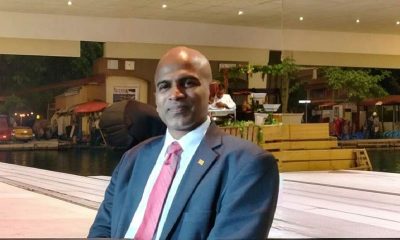
 News4 days ago
News4 days agoSLAS senior to be HC in London, several new dpl appointments
-
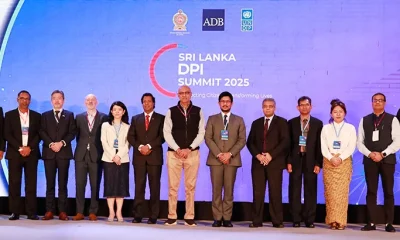
 Business7 days ago
Business7 days agoUNDP, ADB pledge support to SL on its public digital journey at key summit
-

 Features4 days ago
Features4 days agoKen Balendra’s impact on John Keells
-
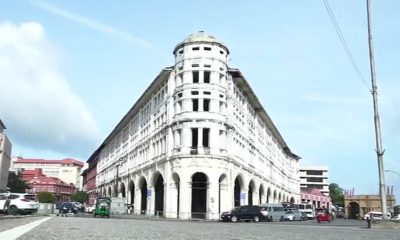
 Life style4 days ago
Life style4 days agoPolished to Perfection
-

 Features7 days ago
Features7 days agoTop three at 40th Mrs World pageant
-

 Opinion7 days ago
Opinion7 days agoEconomic value of Mahinda Rajapaksa
-

 Editorial7 days ago
Editorial7 days agoChallenge of being NPP govt.













